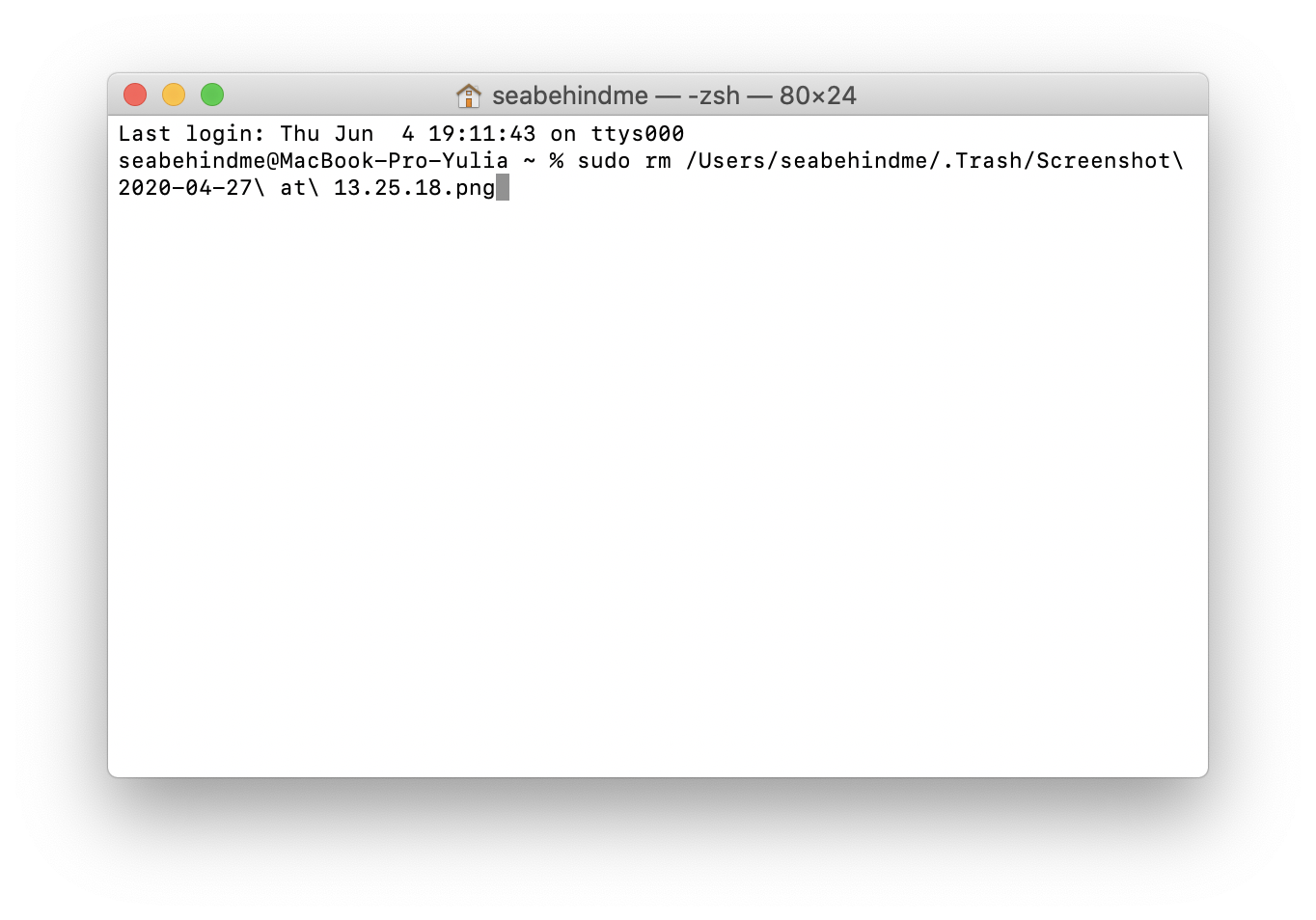

- MAC COMMAND FORCE EMPTY TRASH HOW TO
- MAC COMMAND FORCE EMPTY TRASH DRIVERS
- MAC COMMAND FORCE EMPTY TRASH PASSWORD
MAC COMMAND FORCE EMPTY TRASH HOW TO
How to delete junk files with Cleaner One: If all methods above don’t work, you may need a helper – Cleaner One to clear the Trash in one click.Ĭleaner One help you free up more space by performing an overall cleanup on your Mac, cleaning caches, logs, mail/photos junks, unneeded iTunes backups, apps, large files etc. Empty the trash and restart your Mac to exit safe mode.Release the Shift key when you see the Apple logo with progress bar.Hold down the Shift key on keyboard when your Mac boots.You can follow the steps below to enter safe mode:
MAC COMMAND FORCE EMPTY TRASH DRIVERS
Therefore, you need to start up the Mac in safe mode, which won’t load any third-party hardware drivers or startup programs. The Mac will remind you that some file is in use when it is used by a startup item or login item. This step is to make sure you have quit all apps even some apps with background processes still using the file. This is a common scenario when Mac users clearing Trash, thus, it is necessary to give you some solutions. You might receive messages multiple times which said “This operation can’t be completed because the item ‘insert file name here’ is in use.” In this post, we’d like to talk about why you receive messages as mentioned above and how to release the files on your Mac so you can delete it safely.
MAC COMMAND FORCE EMPTY TRASH PASSWORD
Using sudo requires the administrator password but combined with rm it will absolutely forcibly remove any file regardless of whats going on with it.Cannot Empty the Trash on Mac? Most of you may believe that emptying the Trash is the easiest task in the world until you get the error messages which stop you to empty the trash. This is intentionally not spelled out easily to try and prevent any novice users from accidentally deleting something significant. If that still doesn’t work you can try the ultimate delete approach using sudo and -rf *.

Have backups ready or don’t bother with this method, proceed at your own risk.Ĭonfirm you are in the proper directory and the only files you see are the ones you want to forcibly remove by using ls: If you don’t know what you’re doing you could easily delete crucial system or personal files. Make sure the syntax is correct with this, the “sudo rm -rf” command will erase anything without warning. This is a last resort and intended only for advanced users. Advanced: Forcibly Emptying the Trash via Command Line Now you can try emptying the Trash as usual through the Dock, a keyboard shortcut to dump the file, or go the rm route mentioned below. Launch Terminal found in /Applications/Utilities/ and then proceed: The first approach uses the chflags command to change the flags of all files in the Trash Change Permissions To Forcibly Empty Trash Some users have also reported Command+Shift+Option+Delete to work as a method of forcing the Trash to empty regardless of a file being locked or owned by another user. If that doesn’t work, proceed with the methods outlined below. First: Try quitting all apps to release the file lock or permissions, then attempt to Secure Empty Trash by holding down the Command key and right-clicking the Trash icon.


 0 kommentar(er)
0 kommentar(er)
